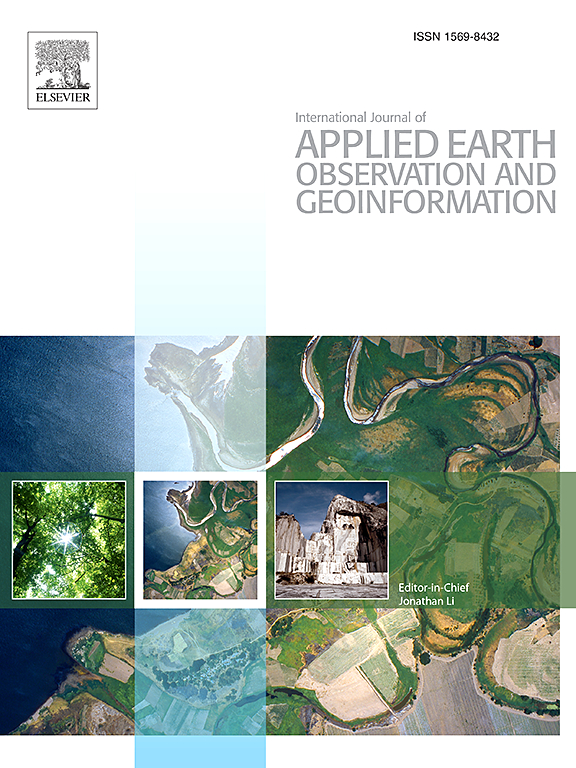Spatiotemporal patterns of the urban thermal environment and the impact of human activities in low-latitude plateau cities
IF 7.6
Q1 REMOTE SENSING
International journal of applied earth observation and geoinformation : ITC journal
Pub Date : 2025-06-30
DOI:10.1016/j.jag.2025.104703
引用次数: 0
Abstract
Urbanization intensifies the surface urban heat island (SUHI) effect, impacting the urban thermal environment (UTE). This study focuses on Kunming, a low-latitude plateau city in China, to analyze the spatiotemporal evolution of its UTE using remote sensing data. The Cumulative Human Activity Intensity (CHAI) index, incorporating land use, nighttime lights, population density, GDP, and tourism activities, is introduced to assess human activity’s spatial impact on land surface temperature (LST). Key findings include: (1) The nighttime SUHI effect is more pronounced and spatially concentrated, with stronger LST warming and a northwestward shift of the SUHI core; (2) The impact of human activities on LST shows spatial heterogeneity, with urban areas experiencing stronger warming than suburban areas. Specifically, sparsely built areas (LCZ9) and open low-rise zones (LCZ6) contribute significantly to warming; (3) Human activities more strongly influence nighttime LST, with this effect intensified by the synergistic interaction between topographic and meteorological factors. This study offers a novel approach to quantifying diurnal and nocturnal human activity effects on LST, providing insights for optimizing UTE management.
低纬高原城市热环境时空格局及人类活动影响
城市化加剧了城市地表热岛效应,影响了城市热环境。以中国低纬度高原城市昆明为研究对象,利用遥感数据分析其UTE的时空演变特征。引入综合土地利用、夜间照明、人口密度、GDP和旅游活动的累积人类活动强度指数(CHAI)来评估人类活动对地表温度的空间影响。主要发现包括:(1)夜间SUHI效应更为明显,空间上较为集中,地表温度增温较强,SUHI核心向西北移动;(2)人类活动对地表温度的影响具有空间异质性,城市地区的增温强于郊区。其中,疏建区(LCZ9)和开放低层区(LCZ6)对增温贡献显著;(3)人类活动对夜间地表温度的影响更为强烈,地形和气象因子之间的协同作用强化了这种影响。该研究为量化昼夜人类活动对地表温度的影响提供了一种新的方法,为优化UTE管理提供了见解。
本文章由计算机程序翻译,如有差异,请以英文原文为准。
求助全文
约1分钟内获得全文
求助全文
来源期刊

International journal of applied earth observation and geoinformation : ITC journal
Global and Planetary Change, Management, Monitoring, Policy and Law, Earth-Surface Processes, Computers in Earth Sciences
CiteScore
12.00
自引率
0.00%
发文量
0
审稿时长
77 days
期刊介绍:
The International Journal of Applied Earth Observation and Geoinformation publishes original papers that utilize earth observation data for natural resource and environmental inventory and management. These data primarily originate from remote sensing platforms, including satellites and aircraft, supplemented by surface and subsurface measurements. Addressing natural resources such as forests, agricultural land, soils, and water, as well as environmental concerns like biodiversity, land degradation, and hazards, the journal explores conceptual and data-driven approaches. It covers geoinformation themes like capturing, databasing, visualization, interpretation, data quality, and spatial uncertainty.
 求助内容:
求助内容: 应助结果提醒方式:
应助结果提醒方式:


